Ukulele For Dummies (24 page)
Read Ukulele For Dummies Online
Authors: Alistair Wood
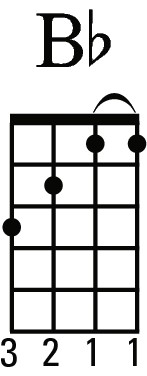
Figure 6-5:
Finger positioning for the full B chord.
chord.
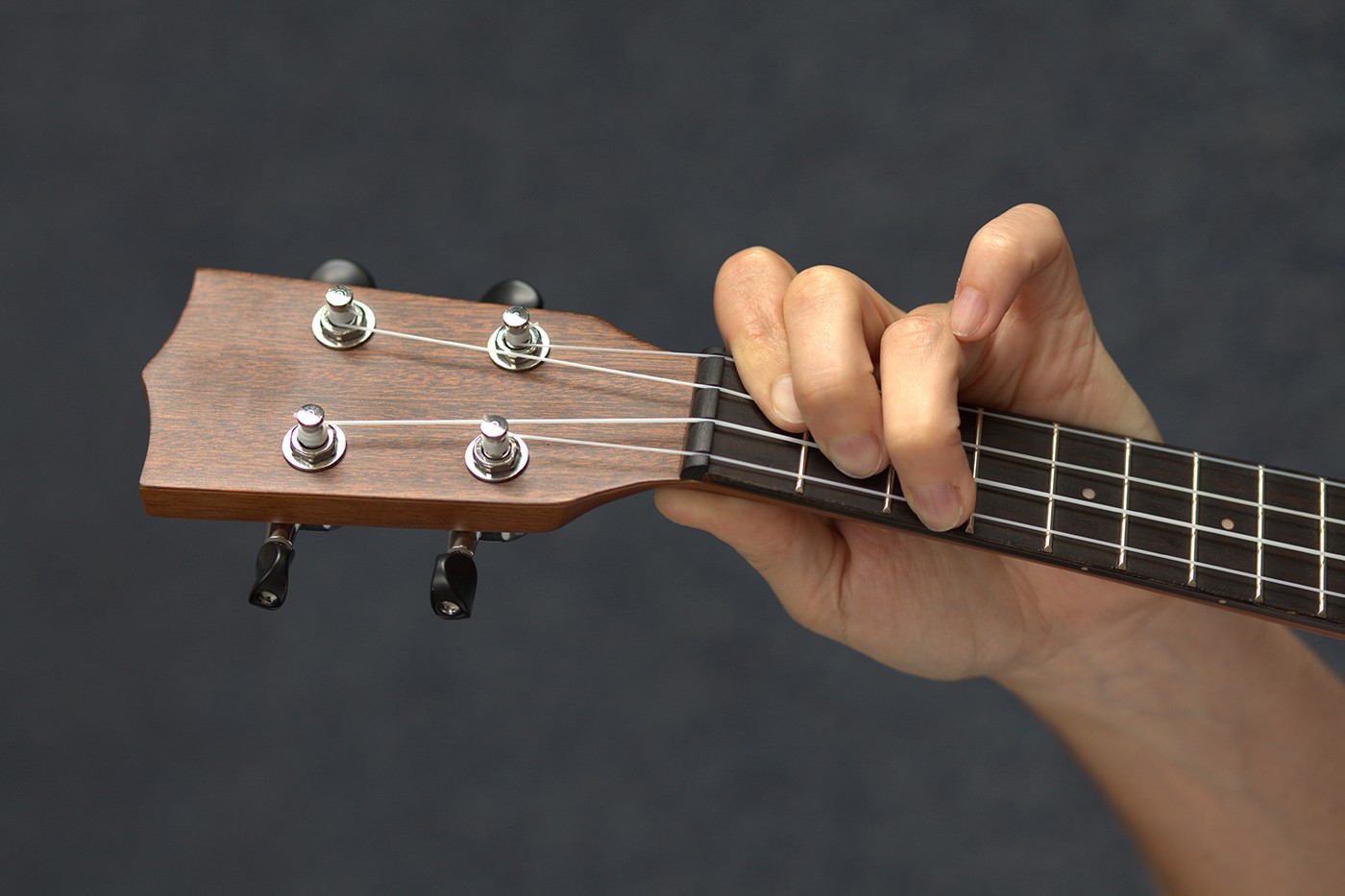
 When you're playing the B
When you're playing the B chord, make sure that your thumb is central on the back of your uke's neck. This technique helps in two ways:
chord, make sure that your thumb is central on the back of your uke's neck. This technique helps in two ways:
 Your middle and ring fingers arch high above the E- and A-strings so that you don't mute them.
Your middle and ring fingers arch high above the E- and A-strings so that you don't mute them.
 You can get more pressure on the chord so that the strings ring clearly.
You can get more pressure on the chord so that the strings ring clearly.
 When you have the B
When you have the B chord under your fingers, you can use the three-chord trick in the key of F. The IâIVâV progression in F is FâB
chord under your fingers, you can use the three-chord trick in the key of F. The IâIVâV progression in F is FâB âC. These chords form the basis of the country song âMan of Constant Sorrow' in Figure 6-7 and Track 19.
âC. These chords form the basis of the country song âMan of Constant Sorrow' in Figure 6-7 and Track 19.
First, though, you need to learn another new chord, F7 (shown in Figure 6-6). To play this chord, start with the standard F chord (which I describe in Chapter 4) and add your ring finger to the C-string at the third fret.
Figure 6-6:
F7 chord diagram.
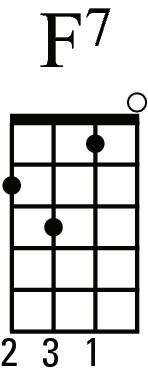
Figure 6-7:
âMan of Constant Sorrow' notation.
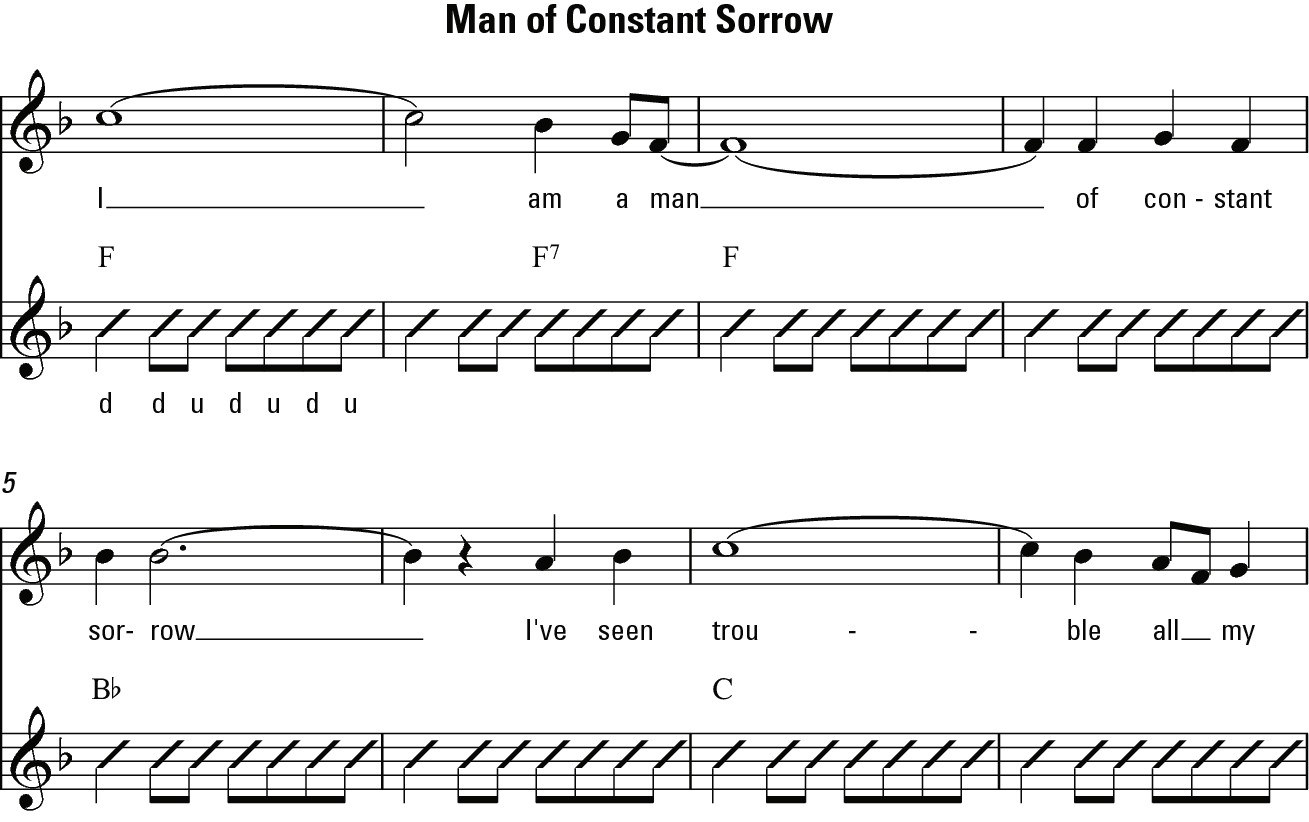
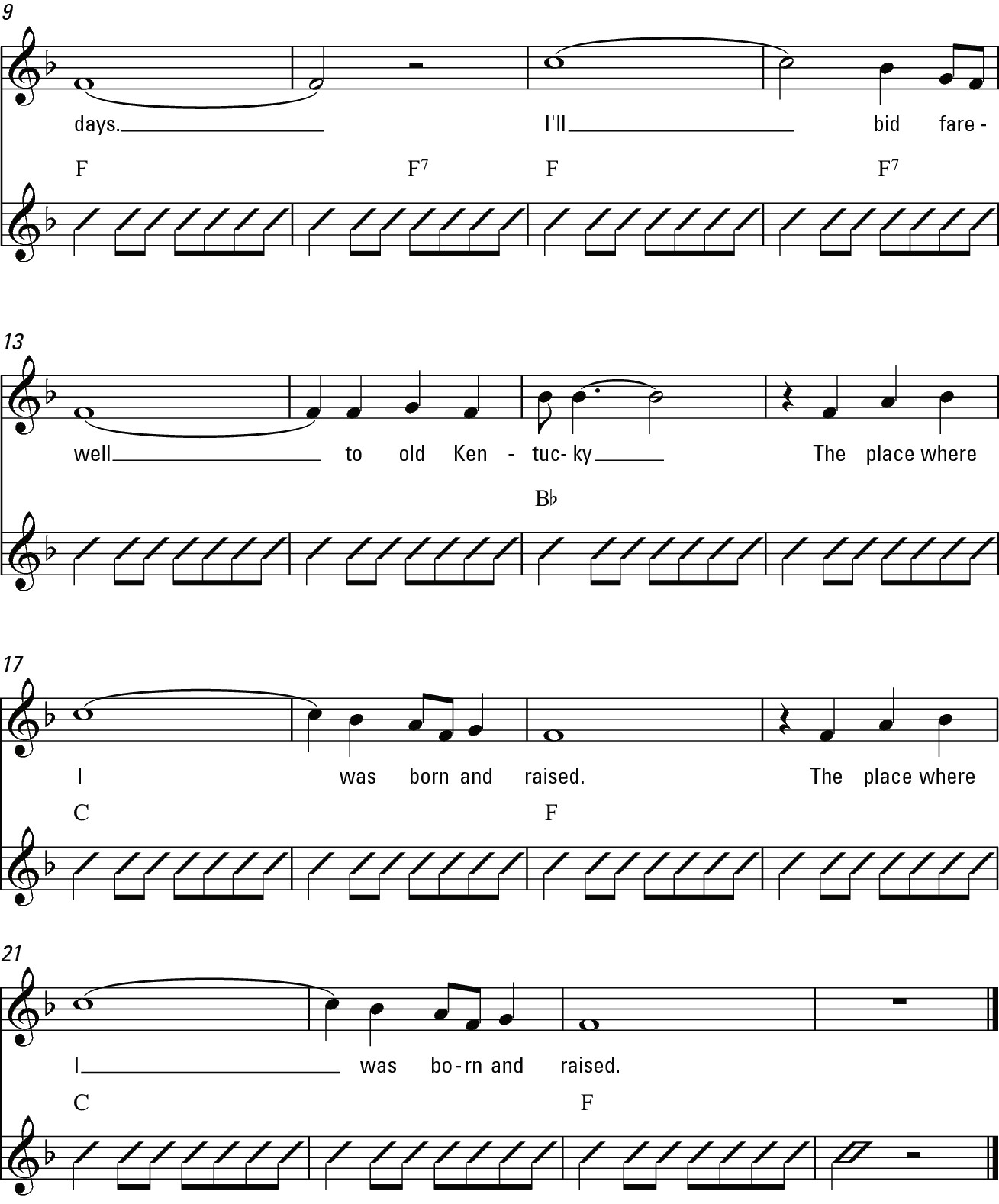
Deciding to play D7
The D7 chord takes the idea of a barre chord one step further than in the preceding section. To form this chord, you barre across all the strings. Start by laying your index finger across all the strings at the second fret so that the tip of your finger is just past the edge of the fretboard.